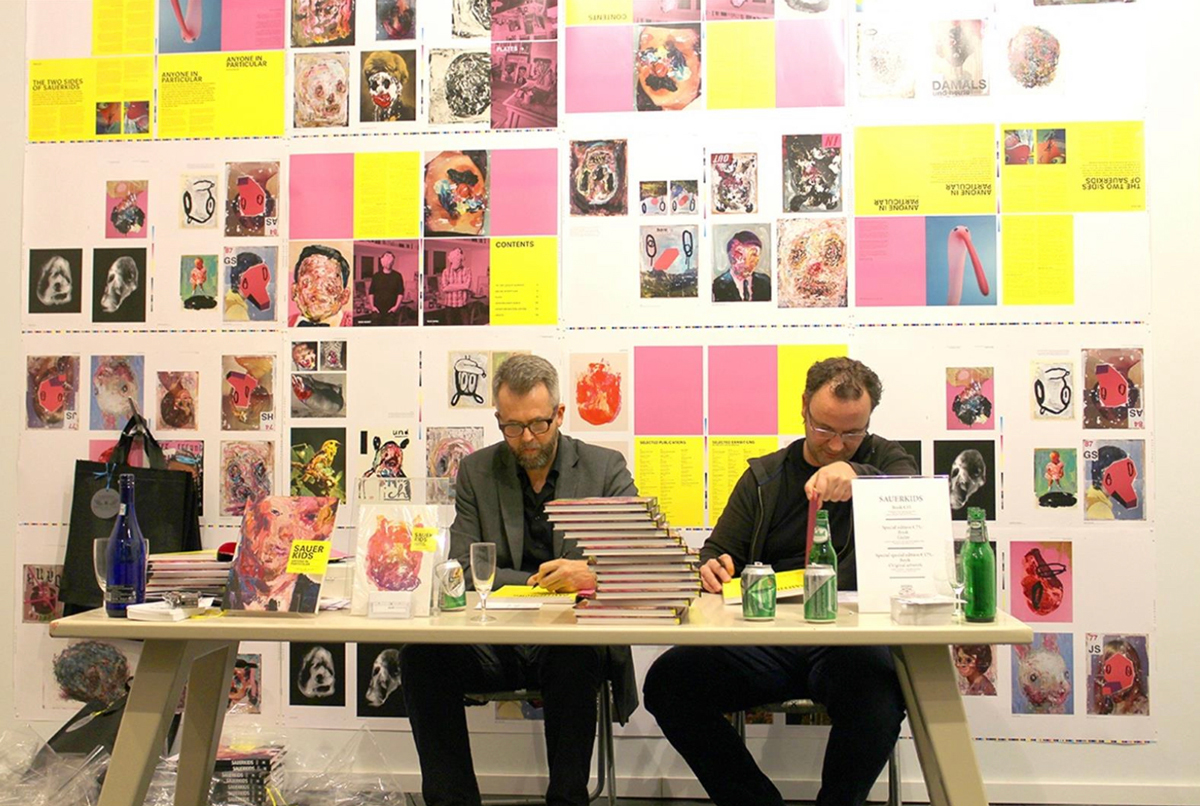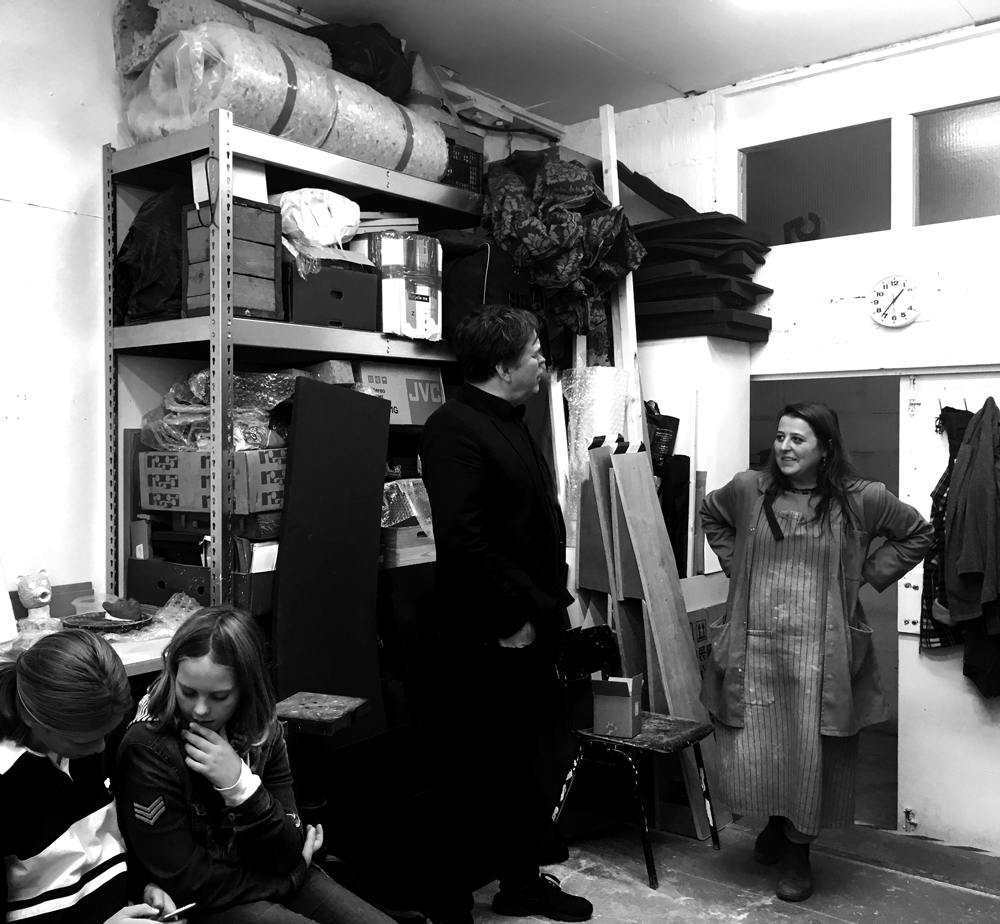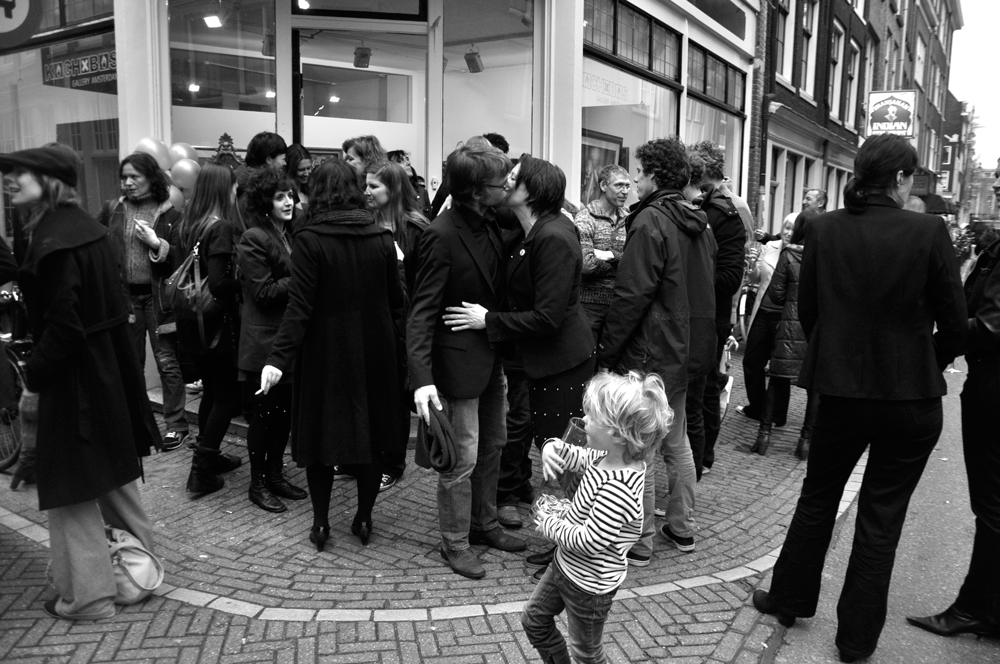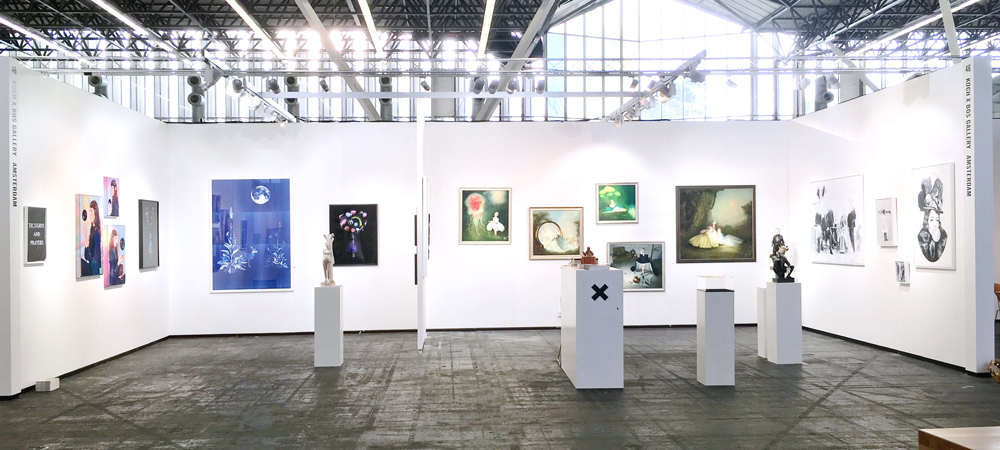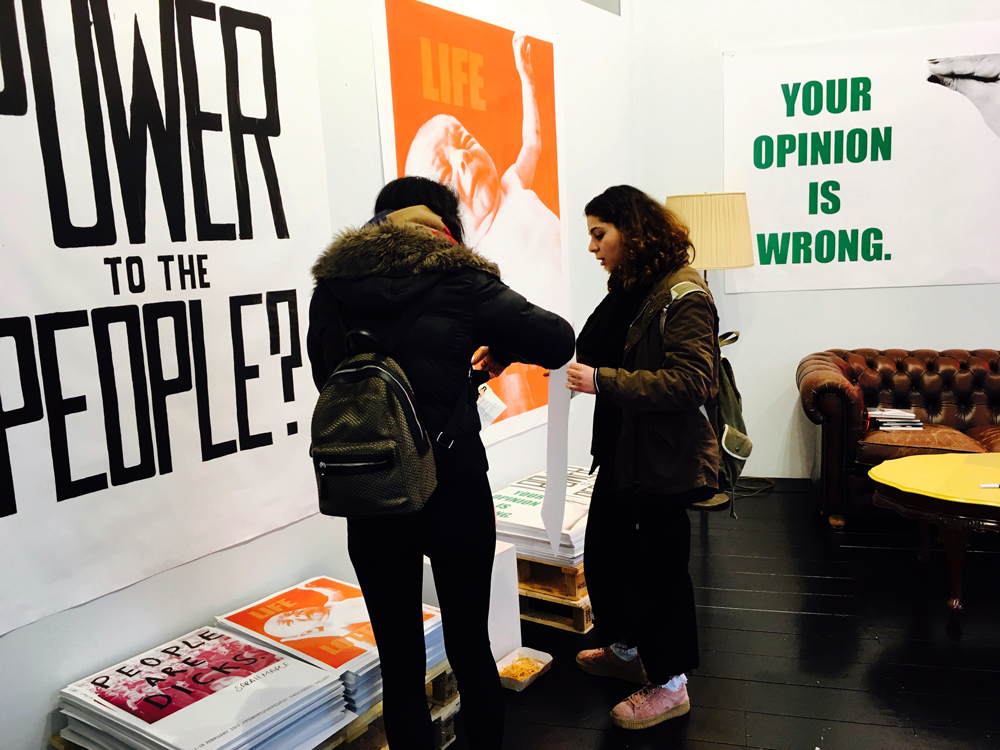04 march 2022, Oscar van Gelderen
The gallery of... Esther Koch en Hans Bos
We’re you exposed to art while growing up?
EK/HB: Not excessively, but the occasional museum visit. We both learned from home that art is important in the broadest sense.
How did you come into contact with the art world?
HB: During my art education I was inspired by my teachers Jan Goossen and Emo Verkerk, and later by working for Rob Moonen. As a attendant at Christo's 'Pont Neuf' I was able to see up close how a huge project can function at a young age, and later, in London, I worked as a musician and album cover designer for several years, a different kind of art world.
EK: Until 2005 we had a studio space together on a breeding ground on the Postjesweg in Amsterdam, which now houses the Frank Sanders Akademie. There we worked and lived with about eighty artistic people. That was my first, real introduction.
After opening our own gallery, we increasingly discovered the art world, with a solo presentation by the British artist Sarah Maple at Art Rotterdam next May as the icing on the cake. We are also proud that the CODA Museum in Apeldoorn selected nine works by Meryl Donoghue for an exhibition last year, and that the Amsterdam Museum bought 'Vastberaden' by Dadara. Ciou's work has been acquired by the Musée de La Poste in Paris and Claire Partington is part of the permanent collections of the Seattle Art Museum and Museum of London. From a breeding ground to a museum…
What was your first job in a gallery? Or did you immediately start a gallery yourself?
EK/HB: On 15 December 2005 we started a gallery ourselves. We wanted a 'bubbly' place or salon next to our design studio; to bring people together, to inspire, and to add something to the city we live in – Amsterdam. We knew what we wanted to exhibit: we had just discovered the work of Mark Ryden, and the work of Peter Pontiac was also a source of inspiration. Both belong to an art movement that we did not know here, strongly grounded in music and popular expressions. We introduced the 'Lowbrow' and 'Pop-Surrealism movement' in the Netherlands, and perhaps in Northern Europe. For our opening exhibition in 2004, we searched high and low, until we discovered Ray Caesar's work (accidentally on a 3D engineering forum). After we finally managed to establish contact ('Who the fuck are you?' because we didn't exist as a gallery yet), we decided to invest all our money in the purchase of the first works.
Our gamble turned out right, and the opening was a blast. This sold-out exhibition was the birth of the KochxBos gallery.
Looking back on it now, we created our first exhibition based on just a few small jpegs. Now that may be much more normal, but eighteen years ago that was a nerve-wracking and new way of doing business.
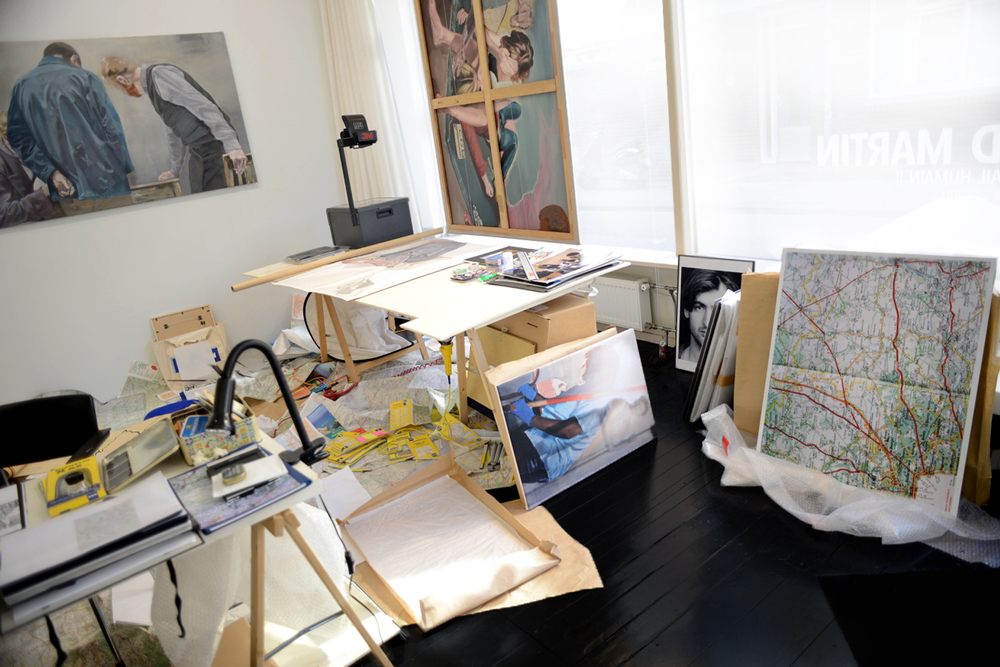
For this exhibition 'Travail Humin II' we have recreated the studio of Jed Martin, from the book The map and the area by Michel Houellebecq. Work on the walls. Visitors were allowed to browse and rummage through his belongings, 2018.
How would you describe your gallery’s profile?
EK/HB: Ray Caesar's work became the gallery's blueprint. Narrative, figurative art, in which often more than one deeper layer is present. We are attracted by original techniques and the artisanal, technical quality of the art we display is very high. Both in the field of digital 3D (Ray Caesar), painting (Zoé Byland) and ceramics (Claire Partington), but also in the video works of Sarah Maple and major art projects by Dadara. We mainly represent female artists, which has happened in a natural way. Above all, it has to click with an artist on a personal level, and our common interests are essential. With the majority of the artists we have been working from the beginning of their development, which is the most fun: to grow both and build something in confidence. Our themes are youth and survivability (how do you deal with events from your early years), emancipation, underground music and a critical view of society.
What do you think is the best part of being a gallerist?
EK/HB:The path we walk with the artists is our real life. We work closely with the artists. We make art books for them, their story is recorded in text and images, designed and printed. Partly because of this, we see that it helps them – and us – to grow substantively, to build a richer life.
And we like our place, even if it's not big. Due to its location and appearance, the gallery invites you to enter. We receive school classes, attend art fairs and have now hosted about a hundred exhibitions. The most beautiful aspect of the profession is that we make people happy by adding something or by giving them an unexpected innovation.
EK: For each book, Hans spends at least a year working with the artist to select the work, filter out the story and get the storyline right. That is beautiful.
Which national / international galleries do you feel an affinity with?
EK/HB: Around 2005, galleries like Jonathan Levine in New York and Magda Danysz in Paris. Later on it was Stolen Space in London. These days places like Giant Space in Bournemouth, but that's probably because Sarah Maple is exhibiting there now, haha!
In an ideal world, which artist would you most like to represent?
EK/HB: We would love to work with Mark Ryden in addition to our artists.
EK: I really like the work of Muntean and Rosenblum and Paco Pomet.
HB:I am also captivated by artists like Jeremy Ville and Guillermo Lorca.
What has changed in the art world since you took your first steps?
EK/HB: In the first decade, the art world was dominated by the somewhat more abstract architectural, structured art, interspersed with 'shock moments'. That made sense at the time, in the aftermath of the 1990s. In our time this was less prominent, because there was room for the more psychological human side, and a solution-oriented activist generation. More colour and focus on social developments. The reason we started working with Sarah Maple was because our own balance slanted too much to aesthetics. Sarah, and later Dadara, have restored the balance: women's emancipation, NFT, virtual reality and religion have been given a place in our gallery.
What / whose work do you collect yourself?
EK/HB: We actually collect moments or memories – when we are somewhere and we see something beautiful, or something that makes us think, we buy it. We have work by Chris Berens, the Chapman Brothers, Gold Peg, and the house is full of work we purchased from the artists we represent.
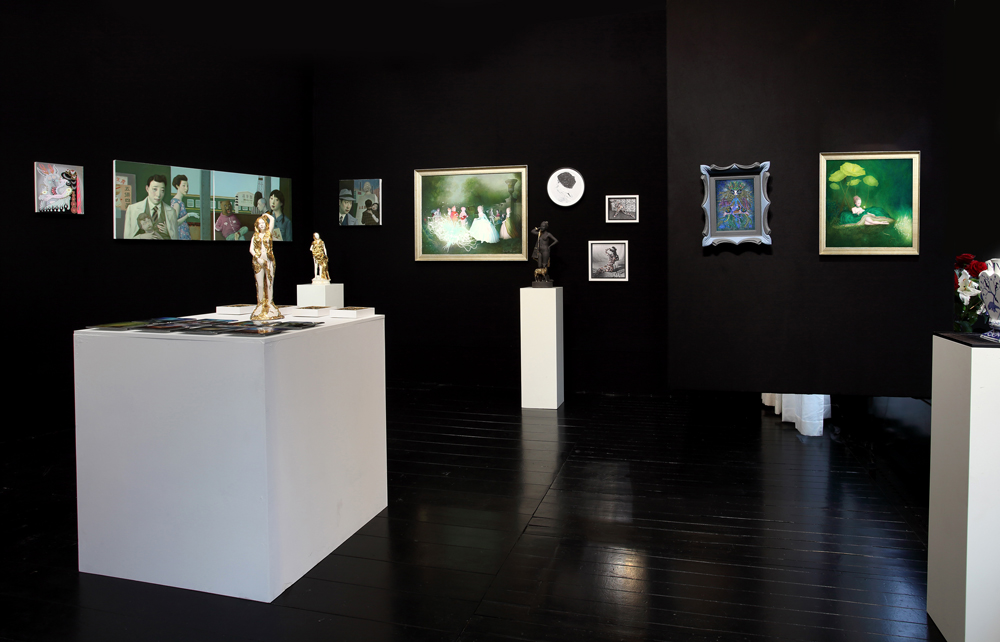
Gallery exists 15 years, group exhibition with work by all artists, made for the exhibition with the theme 'Wide Awake', 2020.
Has the pandemic changed the way you see the artworld?
EK/ HB: It hasn’t realley affected us, as we were also very much focused on 'surviving' this period to be honest. Our exhibitions and openings with time slots – right from the first lockdown period, May 2020 – were an eye opener for us. We spoke to our visitors in a small setting, so we got to know them much better. That's why we didn't have to postpone the opening, and that has been good for us and the artists, it just continued in a new way. In addition, we started selling larger and more expensive works via Instagram, something we hadn't experienced much before.
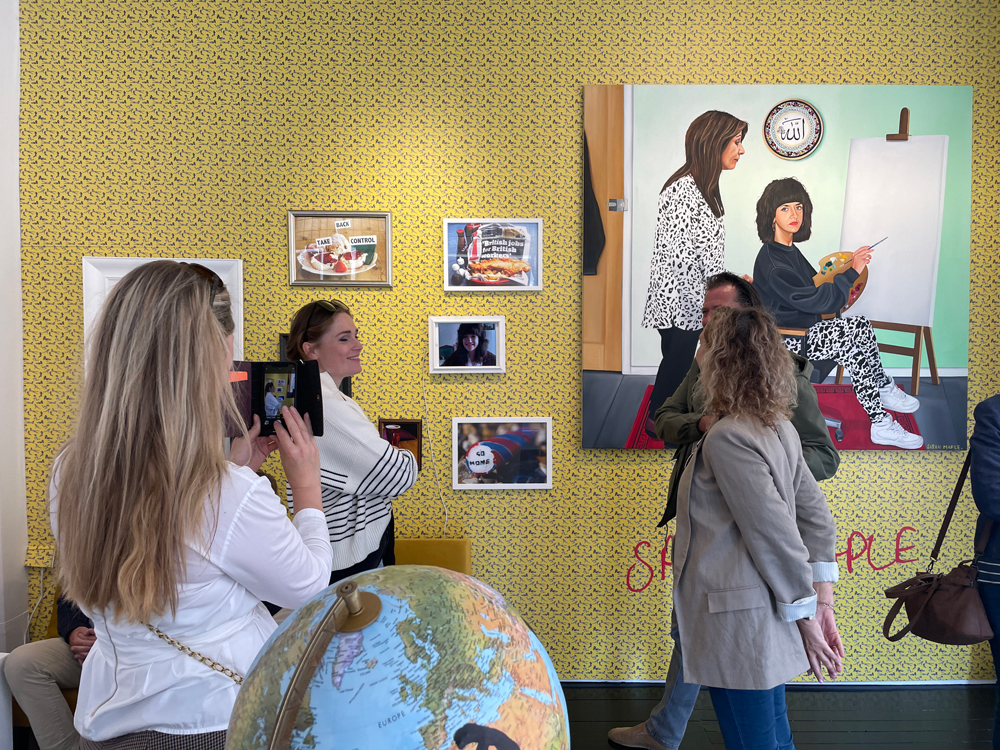
Opening of 'I still wish I had a penis' - a ten year anniversary expo by Sarah Maple. Because of corona she could not physically be at the opening. We had a zoom connection for three days, Sarah was part of the expo, the screen was on the wall in a frame, 2021.

